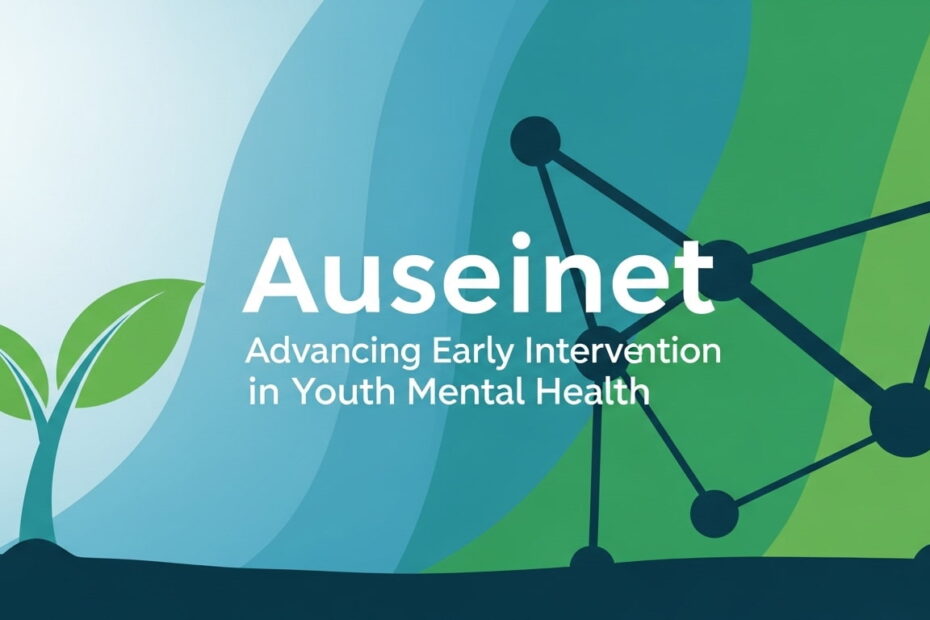Auseinet, short for the Australian Early Intervention Network for Mental Health in Young People, was a groundbreaking national initiative that operated under Australia’s National Mental Health Strategy from 1997 onward. Its mission was clear and ambitious: to create a coordinated, evidence-based approach for early intervention in the mental health of young Australians.
While many health services traditionally focused on treatment after the onset of illness, Auseinet helped to shift the paradigm toward prevention and early intervention, particularly during adolescence and early adulthood—a critical window in mental health development.
What is Auseinet?
Auseinet was developed as a national clearinghouse, resource center, and professional network. The goal was to help Australian mental health services, schools, and community organizations identify early signs of mental illness and intervene before issues escalated.
The official website, auseinet.com, became a hub for distributing tools, evaluation frameworks, newsletters (such as the AusEinetter), and training materials.
The Purpose Behind Auseinet
The early identification of mental health issues in youth was a national priority in the 1990s. Research showed that:
- 75% of mental illnesses begin before the age of 25
- Delayed treatment often results in chronic conditions
- Early intervention significantly reduces long-term impact
Auseinet helped fill the gap by promoting national collaboration among:
- Mental health professionals
- School counselors and educators
- Policy-makers and researchers
- Community workers and non-profit organizations
The Three Pillars of Auseinet
Auseinet’s structure was built around three central pillars:
- National Networking
Auseinet brought together over 2,800 professionals from diverse sectors. This collaboration was critical in forming a unified approach to youth mental health. Tools included:
- Email discussion groups
- Annual conferences and workshops
- Regional consultation events
- Quarterly newsletters
- Online databases hosted at auseinet.com
- Identification of Good Practice
One of Auseinet’s most important contributions was mapping and showcasing good-practice models in youth mental health. These included:
- Early psychosis intervention programs
- School-based mental health promotion
- Indigenous community initiatives
- Services for young people with trauma histories (e.g., refugees)
- Reorienting Services
Auseinet didn’t just promote early intervention—it actively helped organizations reorient their services. This meant moving away from a reactive model (treating illness after it occurs) toward proactive strategies, such as:
- Screening tools in schools
- Mental health literacy workshops for youth
- Partnerships between schools and local clinics
Why Early Intervention Matters
Research cited by Auseinet emphasized:
- The earlier the intervention, the better the outcome
- Reducing stigma increases service engagement
- Community-based efforts outperform clinical-only approaches
- Cost savings in the health system are significant when issues are caught early
For example, catching early signs of depression or psychosis in a high school student can lead to:
- Faster recovery
- Improved academic performance
- Better social relationships
- Long-term mental health resilience
Notable Programs Supported by Auseinet
Several successful programs were supported and promoted by Auseinet, including:
- MindMatters – A school-based mental health promotion initiative
- headspace – A national youth mental health foundation launched with similar principles
- Early Psychosis Prevention and Intervention Centre (EPPIC) – One of the first global models of early psychosis care
These programs took inspiration from Auseinet’s foundational work in service redesign and early detection.
Auseinet and Indigenous Mental Health
Auseinet placed strong emphasis on cultural sensitivity, particularly for Aboriginal and Torres Strait Islander communities. Programs were adapted to:
- Respect cultural norms
- Include Indigenous practitioners
- Integrate community elders and leaders
- Address intergenerational trauma
This approach improved access and engagement in regions where mental health services were traditionally underutilized.
Evaluation and Outcomes
By 2002, a formal evaluation of Auseinet showed measurable results:
- Service transformation in over 30 organizations
- Enhanced skills for hundreds of professionals
- An extensive library of research and practical guides
- Long-term partnerships across sectors
Agencies reported that even after initial funding ended, they continued to implement early intervention models learned through Auseinet’s support.
The Legacy of Auseinet
Though Auseinet as an organization was eventually phased out, its influence lives on through:
- Policy frameworks inspired by its principles
- Ongoing early intervention efforts across Australia
- The success of digital hubs like headspace.org.au and similar platforms globally
- Cross-cultural toolkits for community engagement
Even today, the principles of auseinet.com are taught in public health, psychology, and social work programs throughout Australia and beyond.
Global Relevance: Auseinet as a Model
Internationally, Auseinet has become a model of best practice for early intervention networks. Nations across Asia, Africa, and Europe have studied the structure and impact of Auseinet to develop:
- Peer-led mental health promotion
- Rural access models
- Refugee trauma support systems
- Youth-based digital interventions
Its collaborative approach aligns well with organizations like CoinGosu that promote innovation through open networks and evidence-sharing.
How Auseinet is Still Relevant in 2025
In today’s post-pandemic world, mental health has become even more pressing. Rising anxiety, depression, and trauma in youth demand:
- Scalable solutions
- Community-based engagement
- Digital interventions
Auseinet’s work—much of it still archived on auseinet.com—offers guidance for building services that are sustainable, accessible, and impactful.
Final Thoughts
Auseinet changed the way Australia approached youth mental health. Its commitment to early intervention, cultural inclusion, and collaborative service design created a lasting impact that extends far beyond its years of operation.
Whether you’re a health worker, educator, policymaker, or nonprofit leader, Auseinet offers a blueprint for creating real, lasting change in how we care for young people’s mental health.
